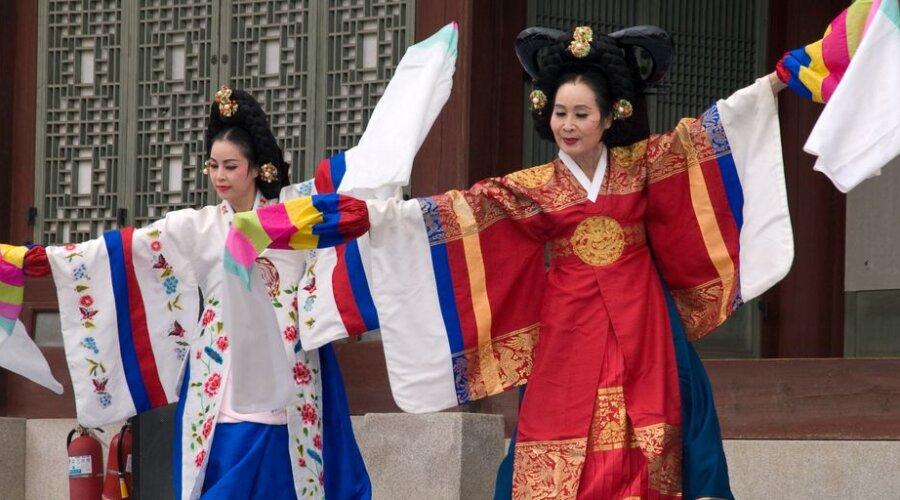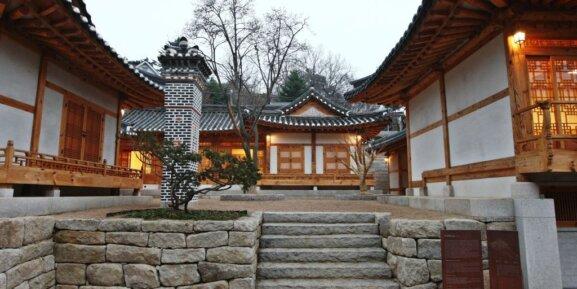“Cultural Capitals: Exploring South Korea’s Art and Music Scene”
South Korea is a country of vibrant contrasts, where ancient traditions blend seamlessly with cutting-edge modernity. From the bustling streets of Seoul to the serene landscapes of Busan, South Korea’s cultural scene is a treasure trove of artistic and musical experiences. This article delves into the heart of South Korea’s art and music landscape, exploring the dynamic fusion of old and new, the global influence of K-Pop, and the preservation of traditional sounds.
Key Takeaways
- Seoul is a hub for contemporary art, featuring world-class galleries, museums, and street art.
- K-Pop has not only dominated the local music scene but has also made a significant impact globally.
- Traditional Korean music, including Gugak and Pansori, remains an integral part of the nation’s cultural heritage.
- Busan is emerging as a cultural gateway, with notable art venues and music festivals, and is bidding for the World Expo 2030.
- The fusion of traditional and modern elements is a recurring theme in South Korea’s cultural evolution, influenced by globalization and international collaborations.
Seoul’s Thriving Art Scene
Seoul’s art scene has experienced a meteoric rise in recent years, becoming a global center for contemporary art. Frieze coming to Seoul is more of a validation of what’s happening. The city boasts a genuinely deep art scene with strong roots and excellent infrastructure. The collecting culture is robust, and there is incredible artistic talent, museums, and non-profit organizations. The Korean art market even surpassed 1 trillion won (US$780 million) in total sales for the first time in 2022.
Galleries and Museums to Visit
Seoul has seen an influx of international galleries, including Thaddaeus Ropac, Lehmann Maupin, Pace, and White Cube. These galleries have contributed to the city’s flourishing art scene. Notable museums like the Leeum, Samsung Museum, offer a mix of traditional and contemporary art, making them must-visit spots for art enthusiasts.
Street Art and Murals
The back alleys of Itaewon have transformed into one of the hippest addresses in Seoul, housing not just cafés and cocktail bars but also vibrant street art and murals. This area is a testament to the city’s dynamic and ever-evolving art scene.
Art Events and Festivals
Seoul hosts numerous art events and festivals that attract the international art community. The second Frieze Seoul is set to open next month, bringing together artists, collectors, and enthusiasts from around the world. These events are a testament to the immense potential and growing recognition of Seoul’s art scene.
The Rise of K-Pop

Iconic K-Pop Groups
Korean popular music, or “K-pop,” emerged as an international phenomenon in the 21st century and became one of South Korea’s most visible cultural exports. Hip-hop star Rain was at the forefront of this movement; by 2005 he had expanded on his significant success in the Korean market to dominate the popular music charts across East and Southeast Asia. Rapper PSY was the next breakout star to emerge on the international stage. His satirical hit “Gangnam Style” was a global smash thanks to its catchy beats and an absurd music video that amassed billions of views on YouTube. Perhaps the most visible K-pop artists, though, were boy bands such as BTS, which combined elements of electronic dance music and hip-hop with impeccable choreography and coordinated outfits.
Behind the Scenes of K-Pop Production
The K-pop industry is known for its rigorous training programs and highly competitive nature. Aspiring idols often undergo years of intense training in singing, dancing, and even foreign languages. The production process is meticulous, with a strong emphasis on creating picture-perfect entertainment. Many top-tier K-pop idols, including BLACKPINK, Exo, and Twice, have extensively utilized social media to foster reciprocal engagement between fans and idols, making it a common industry practice.
K-Pop’s Global Influence
In only a few decades, South Korea has transformed itself from an impoverished city decimated by the Korean War to one of the most prosperous and high-tech places in the world. In the past decade, there’s also been an explosion of international interest in Korean popular culture, especially catchy K-pop music, soapy TV dramas, and edgy cinema, making the most famous Korean singers, stars, and directors household names everywhere from Tokyo to Beijing. Koreans even have a name for this blossoming of foreign interest: Hallyu, or the Korean Wave.
The rise of K-pop is not just a musical revolution; it’s a cultural phenomenon that has reshaped the global entertainment landscape.
| Iconic K-Pop Groups | Notable Achievements |
|---|---|
| BTS | Global tours, Billboard awards |
| BLACKPINK | Coachella performance, YouTube records |
| EXO | Multiple Daesang awards, international fanbase |
| TWICE | Chart-topping hits, extensive social media presence |
Traditional Korean Music
The Beauty of Gugak
Gugak, or traditional Korean music, is a captivating blend of vocal and instrumental sounds that have been passed down through generations. The kayagŭm, a 12-stringed zither, is considered the Korean national instrument and is often featured in gugak performances. The changgo, an hourglass-shaped drum, is another staple in traditional ensembles.
Pansori: The Art of Korean Storytelling
Pansori is a unique form of Korean narrative music that combines singing and drumming. Created by professional performers during the Chosŏn period, pansori features a solo singer-dancer who tells long, dramatic stories. The current repertoire of six long stories was codified in the 19th century by the performer Shin Jae-hyo.
Preservation of Traditional Sounds
Traditional folk dances and music are still very much alive in South Korea. The government supports and promotes several ancient dances, such as the mask dance (chŏyongmu) of the Silla kingdom and the crane dance (hakch’um) of the Koryŏ. These efforts ensure that the rich cultural heritage of traditional Korean music and dance is preserved for future generations.
In an interconnected world, capital cities absorb global influences while preserving their local sounds. Seoul’s K-pop phenomenon conquers charts worldwide, yet traditional Korean pansori and gugak persist. Global artists collaborate with local musicians, creating cross-cultural dialogues.
Busan: A Cultural Gateway
Busan’s Art Venues
Busan’s coastal location, with beautiful beaches, has led luxury hotels and resorts, such as the Grand Josun, Ananti, and Banyan Tree, to expand in the city. This influx has brought with it a wave of luxury brands and clientele, making Busan a vibrant hub for art and culture. Recent years have seen the opening of art spaces including Hyundai Motorstudio, F1963, and P-ARK. The city is also home to an increasingly active gallery scene, with dealers like Art Sohyang, LEE & BAE, and Gallery Playlist among the standouts.
Music Festivals in Busan
The vibrant environment is fertile ground for the Busan Biennale, which has been running since 1998 and takes place this year between August and November. The city also hosts a variety of music festivals that attract both local and international artists. These festivals are a great way to experience the local culture and enjoy some fantastic music.
Busan’s Bid for World Expo 2030
As home to one of the world’s busiest ports, Busan is a cultural and economic gateway to Asia and beyond. This strategic location has led the city to bid to become the 2030 World Expo host city. Winning this bid would be a monumental achievement for Busan, further solidifying its status as a cultural capital.
The work exchange program at Kimchee Guesthouse Busan offers volunteer positions with free accommodation. Located in Busan downtown, volunteers work 3 hours/day, 5 days/week, with one day off to explore the city.
Fusion of Old and New in Korean Culture
Modern Takes on Traditional Art
Korean architecture shows Chinese influence, but it is adapted to local conditions, utilizing wood and granite, the most abundant building materials. Beautiful examples are found in old palaces, Buddhist temples, dolmens, and Buddhist pagodas. Western-style architecture became common from the 1970s, fundamentally changing the urban landscape, but some old-style wooden houses (hanok) still exist even in Seoul, and the traditional Korean floor-heating system (ondol) continues to be used in new construction.
Blending Traditional and Contemporary Music
The fact that in recent years Korean culture has been riding a wave – or in Korean terms, a hallyu – hardly needs stating. From pop music and TV drama to cuisine, it seems we can’t get enough of Korean content – not to mention the many luxury brands that have been heading to the region, with Gucci holding its Cruise show at Seoul’s Gyeongbokgung Palace just months ago. However, until now the country’s art scene hasn’t enjoyed quite the same level of global attention.
Cultural Preservation in a Modern World
Food is an important part of Korean cultural identity. In the diets of even the most Westernized urban dwellers, traditional Korean cuisine, which emphasizes grains—especially rice—and fresh vegetables, continues to occupy a dominant role even amid the popularity of pizza, hamburgers, sushi, Chinese food, and other foreign dishes. A Korean meal generally consists of rice, soup or
Seoul residents are some of the earliest adopters of new technology in the world, especially cellphones and mobile computing devices, and their immediate access to the most up-to-date information means that the city’s hottest neighborhoods and sleepiest sections can change overnight.
Influence of Globalization on Korean Arts
International Collaborations
In an interconnected world, capital cities absorb global influences while preserving their local sounds. Seoul’s K-pop phenomenon conquers charts worldwide, yet traditional Korean pansori and gugak persist. Global artists collaborate with local musicians, creating cross-cultural dialogues.
Impact of Western Art and Music
The fact that in recent years Korean culture has been riding a wave – or in Korean terms, a hallyu – hardly needs stating. From pop music and TV drama to cuisine, it seems we can’t get enough of Korean content – not to mention the many luxury brands that have been heading to the region, with Gucci holding its Cruise show at Seoul’s Gyeongbokgung Palace just months ago. However, until now the country’s art scene hasn’t enjoyed quite the same level of global attention.
Korean Artists on the Global Stage
In only a few decades, this capital has transformed itself from an impoverished city decimated by the Korean War to one of the most prosperous and high-tech places in the world. In the past decade there’s also been an explosion of international interest in Korean popular culture, especially catchy K-pop music, soapy TV dramas and edgy cinema, making the most famous Korean singers, stars and directors household names everywhere from Tokyo to Beijing. Koreans even have a name for this blossoming of foreign interest: hallyu.
As we wander the white-tented party, moving from a room filled with buff and beautiful international underwear models to a congregation of American actors and then Korean artists, Cho tells me he can’t believe the changes he’s witnessing in his hometown. “When I left Seoul to study in New York 20 years ago, an event like this would have been inconceivable,” he says. “Forget about the international art world and the celebrities—just finding any Koreans dressed as well as the people at this party.”
Exploring Korean Cinema
Must-Watch Korean Films
The world of Korean cinema is a treasure trove of compelling stories, breathtaking visuals, and groundbreaking narratives. From heartfelt dramas to jaw-dropping thrillers, there’s something for everyone. Director Bong Joon-ho’s satirical debut, Barking Dogs Never Bite, set the tone that evolved into his Oscar-winning Parasite in 2019. Here are some must-watch films:
- Parasite
- Oldboy
- My Sassy Girl
- The Handmaiden
- Train to Busan
Influential Directors
Korean cinema has been shaped by a number of visionary directors who have pushed the boundaries of storytelling and visual artistry. Bong Joon-ho, Park Chan-wook, and Kim Ki-duk are just a few names that have garnered international acclaim. Their films often explore complex themes and offer a unique perspective on Korean society.
Film Festivals in Korea
Korea hosts several film festivals that celebrate both local and international cinema. The Busan International Film Festival is one of the most prestigious in Asia, attracting filmmakers and cinephiles from around the world. These festivals provide a platform for emerging talents and offer a glimpse into the future of Korean cinema.
In retrospect, the currents of the Korean Wave were already building at the turn of the millennium, long before we’d heard of G-Dragon, but in cinema.
Conclusion
South Korea’s art and music scene is a vibrant tapestry woven from both traditional and contemporary threads. From the bustling streets of Seoul, where K-pop reigns supreme, to the cultural hubs of Busan and beyond, the country offers a rich array of experiences for any art and music enthusiast. Whether you’re exploring historic palaces, diving into the latest pop culture trends, or witnessing the global influence of Korean creativity, there’s no denying that South Korea is a cultural capital on the rise. So pack your bags, bring your curiosity, and get ready to be inspired by the dynamic and ever-evolving landscape of Korean art and music.
Frequently Asked Questions
What are some must-visit art galleries and museums in Seoul?
Some must-visit art galleries and museums in Seoul include the National Museum of Modern and Contemporary Art, the Leeum, Samsung Museum of Art, and the Seoul Museum of Art.
Which iconic K-Pop groups should I know about?
Iconic K-Pop groups you should know about include BTS, Blackpink, EXO, and TWICE.
What is Gugak and why is it important?
Gugak is traditional Korean music that includes both court music and folk music. It is important because it preserves Korea’s rich cultural heritage and offers insight into the country’s history and traditions.
What are some major art events and festivals in Seoul?
Major art events and festivals in Seoul include the Frieze Seoul art fair, the Seoul Art Fair, and the Korea International Art Fair (KIAF).
How has K-Pop influenced global music trends?
K-Pop has influenced global music trends by introducing unique music styles, high-quality music videos, and intricate choreography. It has also led to increased interest in Korean culture worldwide.
What is Pansori and how is it performed?
Pansori is a traditional Korean genre of musical storytelling performed by a vocalist and a drummer. The vocalist uses expressive singing, speaking, and acting to tell a story, often accompanied by rhythmic beats from the drum.



